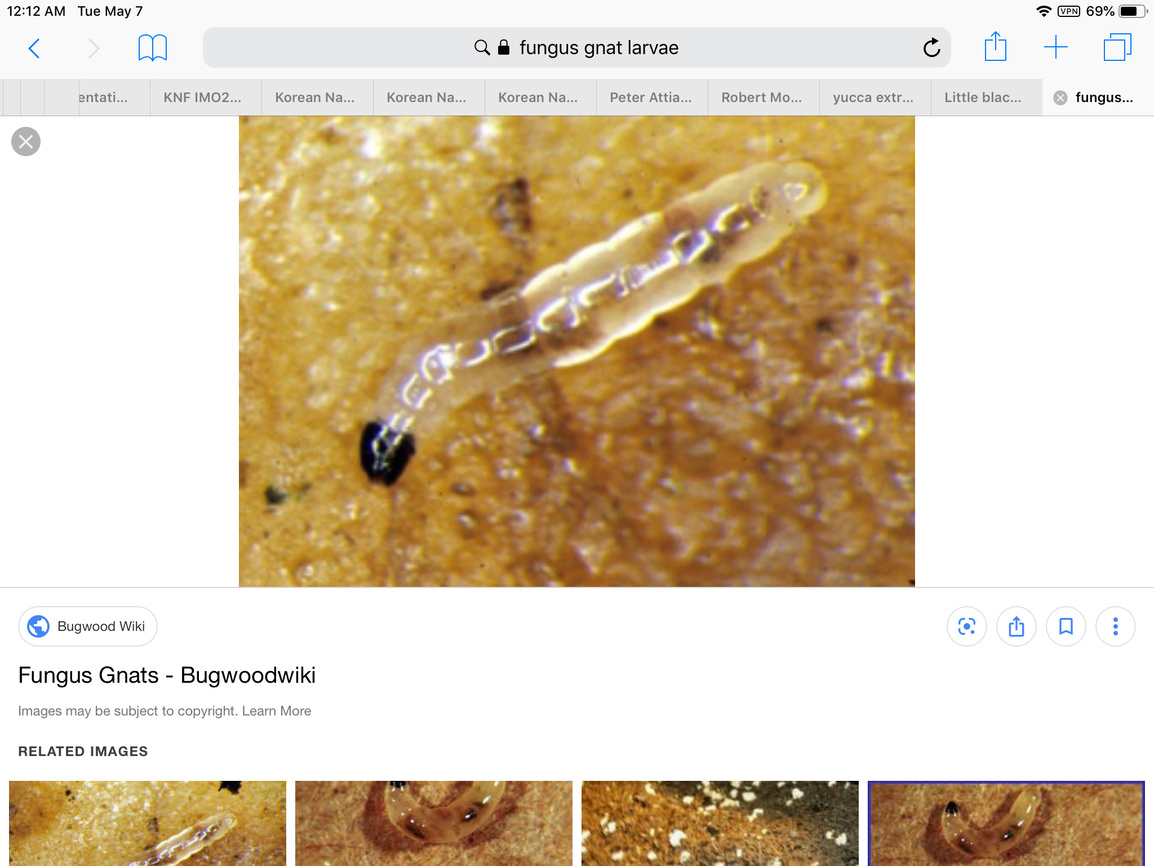So I have decided to dive head first into organic gardening and had a couple questions about the critters I have been finding in or around my pots and worm bin… first as far as my research or google/YouTube searches the first are “pot worms” it is my understanding they are composters and may not be harmful but tend to thrive in more acidic environments should I take action/ what action?? Next I have begun to notice small “ mites” in my worm bin… again With YouTube/google as my sources it seems these are beneficial soil creatures that are normal and kept in reasonable numbers should not be a problem. I think the pot worms are bothering me a bit more because they seem to be in pretty large numbers. Any advice or words of encouragement??? I do have videos of both but can’t upload them. I get an error message I think there might be a format issue…
File size is too large. About the only thing is to post to Youtube and link it in your posts.
I would be worried unless I had proof that they were harmless. There are a number of larvae that look much like any other and will kill your plant. I have gone to the store and bought nightcrawlers and dumped em in the soil for the plants and others use carnivorous mites, ladybugs, Praying Manti etc.
@Skydiver @garrigan62 anyone else you guys might think of. I have no experience with whatever these are.
Small white worms in your plant’s soil are most likely the larvae of the fungus gnat. This gnat thrives in moist, shaded areas and produce a maggot larvae that may harm the root system of your plant. Once you treat the existing problem, there are cultural controls for preventing the return of the gnats. Always inspect a new plant for the worms before bringing it into your house, where the infestation may spread to the rest of your indoor plants.
Before you try what’s below. Take some stale bread and soak in milk and lay it on the soil. They should go to the bread. Once full discard and
Replace it with nother one
Step
Remove the small worms by scooping out the top 1 inch of potting soil with a hand spade. Dump the discarded soil in a plastic bag, tie it in a knot, and throw it away.
Step 2
Apply an insecticide specially intended for indoor plants and targeted to fungus gnats to the soil and the plant itself. Follow the package directions for application.
Step 3
Replace the top inch of the soil with new, sterile potting soil. From then on, allow the soil to become slightly dry between waterings. Do not let the pot sit in standing water. Keep it in a well-ventilated, sunny spot.?
You da man! I’ve never had them and those worms were kinda big. It would not make me happy.
I hear ya my friend. Please keep me posted ok… I.m still on this…lol
Is that soil compot?
The soil mix is 1/3 compost 1/3 perlite 1/3 coco coir amended with oyster shell, azomite, biolive, 4-8-4 rose n flower all amendments by Down to earth with white clover cover crop and a little barley stray for mulch and a blumat dripper system. But to more specifically answer your question yes I did about a week ago cut back the cover crop and top dress with some compost
Check your compost pile and see if thats where they came from ok
Not me: @MMG is the one needing help.
These are the fungus gnat larvae…notice the black heads.

These are the adult fungus gnats
If those are fungus gnat larvae than you should have many many many of the adults flying around too.
I use the yellow sticky cards when necessary to help monitor how many I have based on how the card fills up with bodies. They don’t do anything to kill the larvae but help you know how bad they are and do kill the adults.

You may think about reducing the flow/frequency of the watering as they feed on the green algal growth on the soil and buy some BTi granules and sprinkle on top and that will release the bacteria that invades the larvae and kills them.
I have them in my living soil and they are managed by other things in the soil I guess as the population is low. I do apply BTi from time to time but my goal isn’t to completely eradicate them but to keep them in check. If they do all die I’m ok with it but if not I’m ok with that too. The critters in the healthy living soil will self regulate things like wolves and deer do in the wild.
Hope this helps.
His looks nothing like that and. With that being said he should b e ok. The worms he has will help. Here is something else…
If you’ve added materials that change the pH balance in your compost pile or if rain showers have made it much wetter than usual, you might notice a large collection of white, small, thread-like worms working their way through the heap. These are not baby red wigglers as you might think, but rather a different breed of worm known as the pot worm. Let’s learn more about pot worms in compost. What are Pot Worms? If you’re wondering what pot worms are, they’re simply another organism that eats waste and gives aeration to the soil or compost around it. White worms in compost aren’t directly a danger to anything in your bin, but they do thrive on conditions that the red wigglers don’t like.
Thank you very much for stepping up . Be Saf e
Will
Nope, Nope and nope. Those critters look like trouble.

